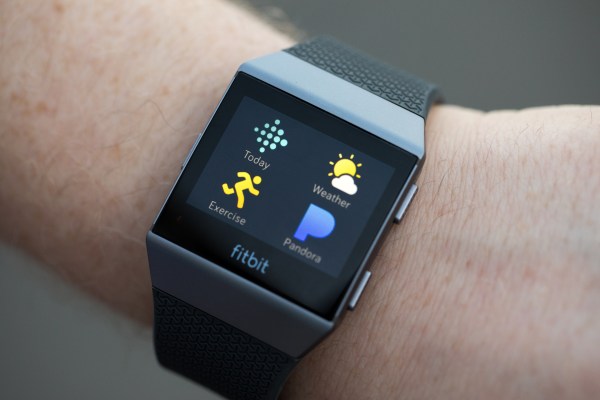A lack of apps wasn’t my biggest issue with the Fitbit Ionic — but it was up there. The inclusion of a third-party app store was one of the ways the company was looking to set the device apart from the rest of its products, and aside from a couple of high profile partners, there really wasn’t much worth mentioning.
Things are looking a bit better as of this morning. The company noted in a blog post that 60 apps and 100 watch faces have been added or are coming soon to the Ionic ecosystem. They’re not all really notable, but there are enough big names on the list to warrant a second look at Fitbit’s first true smartwatch.
Some biggies include: The New York Times, Yelp, Uber, Lyft, Nest and United Airlines. Deezer’s also getting in on the action next year, becoming the second notable music service after Pandora to buy in to the Ionic ecosystem. The streaming service is hoping to pick up some new devotees by bringing offline streaming to the watch. In terms of name recognition, it’s a notable step down from a Spotify, but when it comes to taking music and leaving the phone behind, it’s a start at least.
Some of the new apps arrive at the height of the holiday gift buying season, so perhaps they’ll make the Ionic a more tempting, Android compatible alternative to the Apple Watch. It’s a bummer, of course, that the product didn’t launch with this full an app selection, but if nothing else, it shows that Fitbit’s committed to building the thing up as quickly as possible.
After all, when we spoke with CEO James Park during at the device’s launch, he told us that the company’s purchase of Pebble was essentially a software acquisition. Fitbit knew it would be launching an app ecosystem from scratch, and Pebble’s team had the development tools to make porting an app to its new smartwatch OS a much easier task. Developing for yet another new app store is a pain, but at least Fitbit’s making the job a little simpler.
Of course, the Ionic still has its share of issues. I’m not really a fan of the hardware design, which, among other things, isn’t nearly flexible enough to fit on smaller wrists, knocking out a big potential user base. But as multiple acquisitions have shown, the company’s all-in here, and perhaps the next generation device will address those issues as the app selection continues to grow and users shift their focus toward smart devices.
